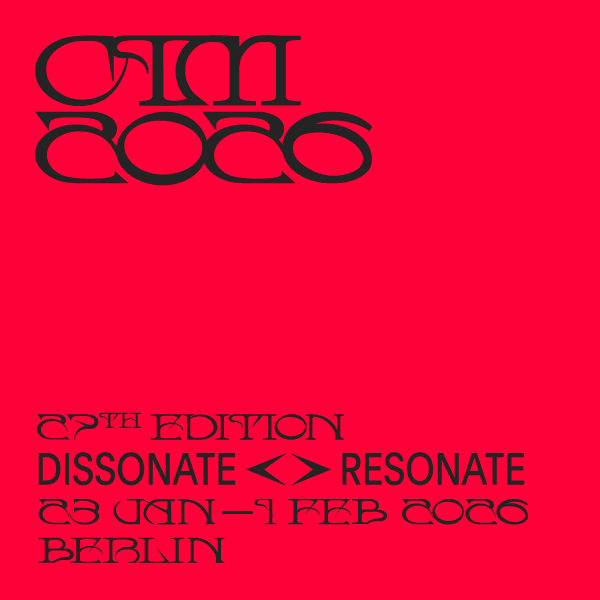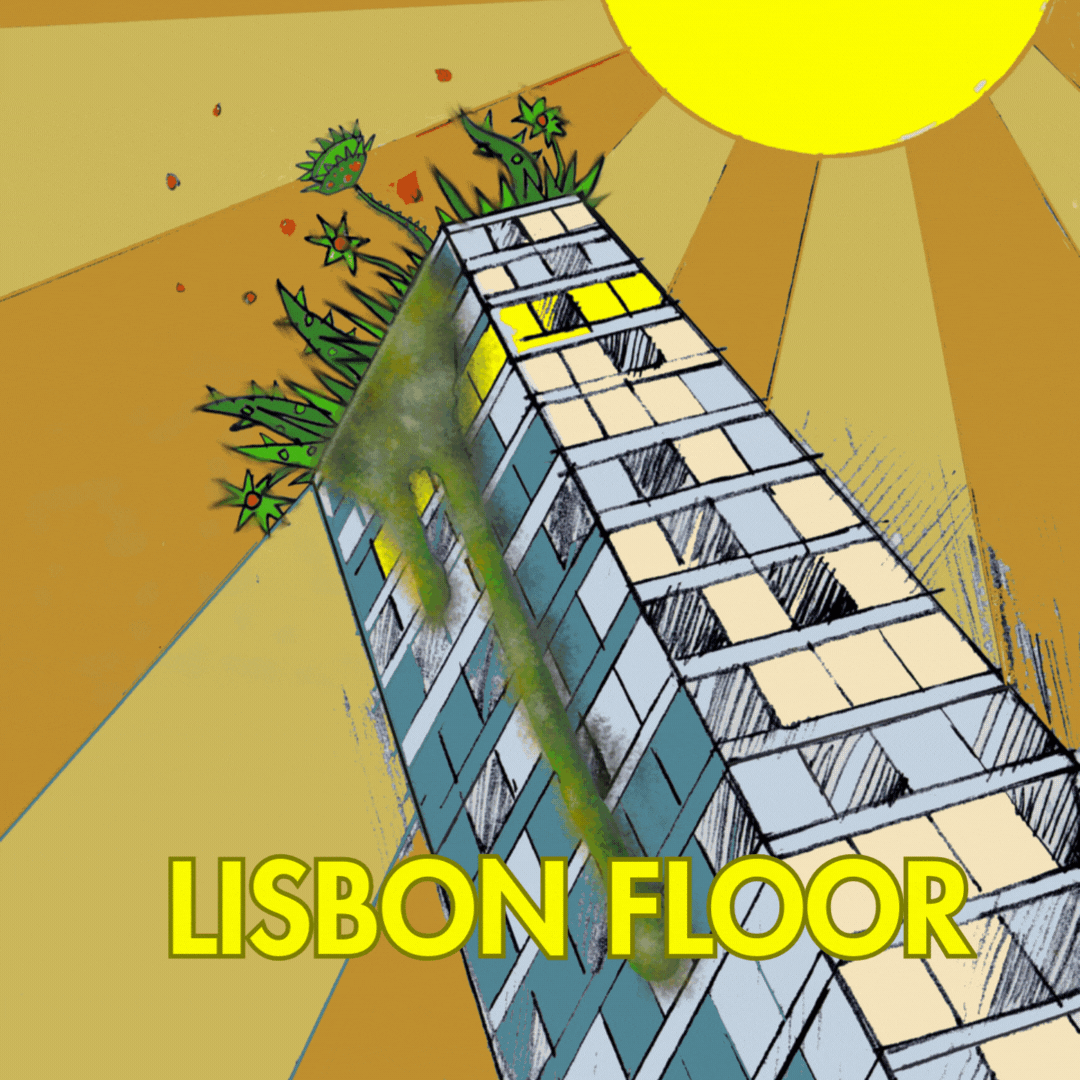Between Skin and Noise in Berlin
Jennifer Walshe rarely stood still on stage. The Irish composer and performer speed-talked, kicked at the drummer, and wrestled with the space like a preacher trapped in her own feedback loop. She repeated the mantra »We want eternity«, but also ranted about exorcism and self-annihilation. Meanwhile, the keyboardist from Ensemble Nikel unrolled a sleeping bag in the middle of it all.
A cacophonic sitcom in disintegration. A quirky, deliciously crackling Herzlich Willkommen to Berlin
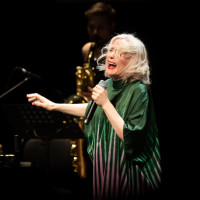
The performance concert Minor Characters – created by Walshe and Matthew Shlomowitz – emerged as a cacophonic sitcom in disintegration. A quirky, deliciously crackling Herzlich Willkommen to Berlin.
Melencolia – the opening production of Berlin’s MaerzMusik festival, created by Brigitta Muntendorf and Moritz Lobeck – approached the contemporary moment in a completely different way. Ensemble Modern and the choir Apollo Choir of the Staatsoper Unter den Linden guided us through Japanese karaoke, Austrian folk melodies, Second Life, and the Iranian ney-anbān virtuoso Saeid Shanbehzadeh, who appeared on screen like an exotic hallucination.
A kitschy collage where Albrecht Dürer’s humanist darkness collided with TikTok’s flickering surfaces
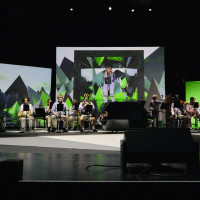
But the fragmented pulse of the performance was frustrating, like a concert installation disguised as stage art. That’s how feelings function in the post-digital age. Melancholy is not transcended; it is repeated. Melencolia became caught in its own digital melancholy – unable to offer us anything but fragments, loops in a kitschy collage where Albrecht Dürer’s humanist darkness collided with TikTok’s flickering surfaces.
At first, I didn’t understand why we were offered earplugs for the concert
Between mechanical noise and ritual silence
It was the first time the New York–based ensemble Yarn/Wire visited MaerzMusik. Their performance of Sarah Davachi’s Feedback Studies for Percussion (2022) for two pianos and two percussionists unfolded like a secret, meditative ritual. The four musicians carefully, almost in slow motion, handed sounds to each other – like a delicate, wondrous relay. The music seemed repetitive, yet constantly changing, always moving toward new, unpredictable places.
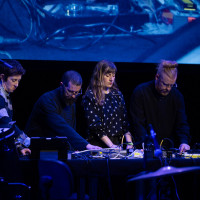
Afterwards, in the work In Memory (2024) by Beirut sound artist Jad Atoui, hard drives took center stage. When the tiny motors of these memory machines started and accelerated, an autonomous wall of sound emerged – a buzzing, crackling cacophony reminiscent of a neighbor’s vacuum cleaner heard through multiple sound filters. Like little drones revving up. The piece took on a more industrial, metallic ambience as two musicians played cymbals, adding sharp, shimmering layers to the soundscape.
At first, I didn’t understand why we were offered earplugs for the concert featuring Mark Barden’s limina and Ligia Lewis’ Sensation 1. In the beginning, the sound was so soft it almost dissolved into the room. But suddenly, the noise erupted. Saxophone, synths, and electric guitar merged into massive, metallic sound surfaces that tore the air apart and rippled almost tangibly through the body.
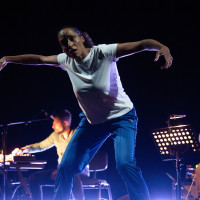
Lewis’ solo was a sculptural choreography where gesture and silent singing transformed the body into a living sculpture. Together, Barden and Lewis explored the borderland between sound and body, and at times they succeeded in their thesis: the sound felt touchable, and the corporeality of sound mirrored the soundlessness of movement.
The performers on stage appeared as creatures in constant transformation – half human, half amphibian
Wild chameleons and cool hippos
One of the highlights of this year’s MaerzMusik was Nguyễn + Transitory’s performance Drifting to the Rhythms at the Southeast of Nowhere at Radialsystem, where Southeast Asian folk dance met electronic music in a nonverbal, moving ritual. The choreography – performed by five dancers – created a world of vulnerability, disorientation, and mutual trust. On a touch-activated floor interface, the dancers created real-time compositions – a moving encounter between tradition and modern experimentation.
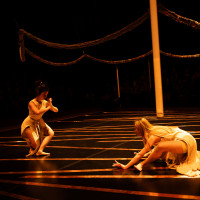
Fluid dream worlds could also be experienced in two works at Sophiensæle. In Ute Wassermann’s The Art of Camouflage, a green-glowing, vibrating habitat emerged where voices merged with resonances from aquariums, mini-speakers, and brass megaphones. The performers on stage appeared as creatures in constant transformation – half human, half amphibian – while the boundary between body and environment gradually dissolved.
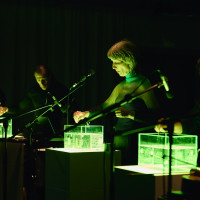
In a chameleonic, hallucinatory soundscape, oppositions such as human/animal and nature/technology melted away in favor of a fluid community of reciprocity. A ritual that challenged our idea of what a body and a voice can be.
The sounds were animalistic and electronically distorted, echoing hidden instincts in the night’s darkness
In The Urban Tale of a Hippo – created by composer Panayiotis Kokoras, choreographer Andrius Katinas, and scenographer Nanni Vapaavuori – the ensemble Synaesthesis led us into a dream world filled with light and smoke, inspired by Deleuze and Guattari’s thoughts on transformation and fluid states.

The sounds were animalistic and electronically distorted, echoing hidden instincts in the night’s darkness, floating between civilization and primal force. The audience could move freely, becoming curious spirits in a choreographed ritual rather than a traditional concert – a mythological landscape where everything was in motion and nothing stood still. I don’t know how long the performance lasted, but it wasn’t a minute too long.
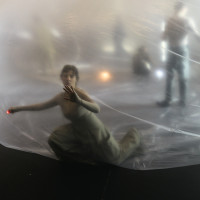
Both works at Sophiensæle revolved around the post-human: How can we imagine a world where humans are no longer the center, but just one voice in a larger ecological and technological chorus? Here, MaerzMusik revealed its most daring side.
Skin is just as important as the ear. I understood that in Salon of Touch
The skin as ear
Skin is just as important as the ear. I understood that in Salon of Touch – a sensory laboratory with works by Aviva Endean (A Face Like Yours), Jeppe Ernst (Offertorium: Treatment B), Wojtek Blecharz (blacksnowfalls), and Kuba Krzewiński (Contre No. 1 and Listen with your skin). I – and the others in the room – listened with the skin, listened naked, explored my face, rubbed it with my fingers – and discovered that the face is a landscape of resonance. Sounds are heard differently from within.
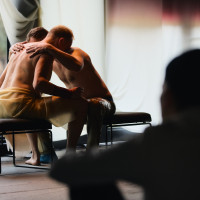
The first thing the audience did upon entering the bright space at Haus der Berliner Festspiele was to wash our hands. Salon of Touch – curated by Aliénor Dauchez, Bastian Zimmermann, and Kuba Krzewiński – felt overall like a cleansing ritual.
»We can’t go back to the forest. We are always available. Even in Schwarzwald, we are online«
These were the last sounds I heard in Berlin. Radically different from the festival’s first day, when the artists behind Melencolia said during an artist talk: »We can’t go back to the forest. We are always available. Even in Schwarzwald, we are online.« Maybe it was only here, in Salon of Touch, with a view of a cherry tree outside the window at Haus der Berliner Festspiele, that we could truly be challenged in our ideas of what it means to be human in a fragmented, hyper-connected time. Here there were no digital loops, only the microscopic vibrations of the skin. And everything was good.
MaerzMusik, Berlin, March 21 – 30, 2025
English translation: Andreo Michaelo Mielczarek
